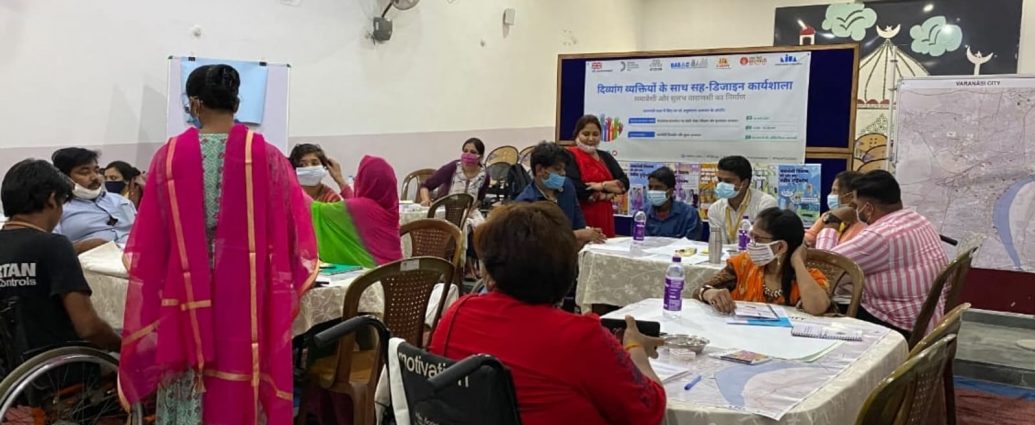We are living in an era which is changing at an ever-increasing rate, one in which the aspirations for a good quality of life and better economic opportunities are escalating exponentially the world over. We are also witnessing growing conflicts as well as the harsh impacts of climate change. The Covid-19 crisis has been a reality check for all of us, with respect to the health delivery and emergency systems, and it also drew attention to the exacerbating inequalities and vulnerabilities. It brought to light the fragility of our economic systems and social constructs and increased vulnerability with age, gender and disability. The theme of the World Habitat Day 2022, ‘Mind the Gap- leave no one and no place behind’ also reiterates this issue of growing inequality and challenges in cities and human settlements. The sentiment is not unfamiliar to India. As a confident nation with its foundation in traditions and modern outlook, India has a firm belief in the Gandhian concept of “Sarvodaya through Antyodaya, implying the welfare of all through the weakest of the society.”
We have already entered into the auspicious period of Amrit Kaal. As reflected by finance minister Nirmala Sitharaman, the first year of the Amrit Kaal will provide the blueprint and be foundational to the progress of India at 75 to India at 100. We are aspiring to become a $ 20 trillion economy by 2040 and a global economic power in the next three years. This would require recognising and tapping the potential of every citizen, including the marginalised groups of women, children, the elderly and persons with disabilities (PwDs), to become an active contributor to India’s growth. This would entail not sympathising with PwDs, rather empowering them enough to be mainstreamed into urban systems, i.e. treating them as an equal and not disabled.
Cities, the major contributor to the economic growth, are complex ecosystems with vibrant and diverse citizens; characterised by increasing pollution, high densities, and traffic congestion, among other tangible challenges faced by the urban population. Compounded with the prevalent physical, social, and economic barriers, urban living is far more difficult for the vulnerable population of PwDs and restricts ease of living. The statistics indicate about 8 million or one-third of the total population of PwDs live in Indian cities, a number likely to increase multifold with the increasing probability of crises like Covid-19, changing population trends, stressful lifestyles and rising chronic conditions. As we pave the way for a transformative future, it is imperative to focus on the welfare of all, including PwDs. Considering our current growth trajectory, it is an opportune time to embrace progressive models that focus on empowering individuals, communities and cities to fulfill their duties and integrate inclusion as a cross-cutting component of urban development.
What does that mean? It hints at a 360-degree adoption of the principles of inclusion. This would involve reforms in the legislation, creation of robust regulatory mechanisms, strategising inclusive financing and budget allocations, implementation of pilot projects, fostering implementation, strengthening capacities and more importantly a strong intent in the entire value chain of urban service delivery. Under the aegis of the ministry of housing and urban affairs, the National Institute of Urban Affairs (NIUA), through its Building Accessible Safe and Inclusive Indian Cities (BASIIC) programme, has been systematically working towards bringing this transformation and mainstreaming inclusion in urban India. This involves advocating the shift from barrier free approach to universal design approach. Some of the milestone achievements in this journey include development of the Harmonized Guidelines and Standards for Universal Accessibility in India, creation of ABLE-India framework to assess accessibility of public buildings, amendments in the planning guidelines and capacitating 300 plus officials. The ecosystem created with relevant stakeholders from the quadruple helix has been pivotal in the success of these endeavors. Herein, a triple ‘I’ approach of integration, implementation and innovation is being adopted to ensure effective and fast delivery.
To enhance the ecosystem for assistive technology and inclusive solutions, and for the sector to emerge as economically viable with adequate market opportunities, the UN in India and the NIUA recently organised the Smart Solutions Challenge and Inclusive Cities Awards 2022. The initiative sought crowd-sourced tech-based solutions and innovations for addressing the city-level accessibility and inclusion challenges. These solutions covered key areas such as policy and governance, transportation and mobility, health and sanitation, disaster risk reduction, and data collection and management. These have huge potential to support cities to be more inclusive. The aim is to not only identify more such solutions but also match prospective cities for their pilot. The aspiration is to create an incubation hub for identifying and scaling innovation related to assistive technology. The next step will be to customise the solutions as per different stakeholders’ needs and make the innovations available to various cities.
While October is being celebrated as ‘Urban October’ by the United Nations, it is time to work towards transformation by being innovative and agile, thereby contributing to the dream of becoming Atmanirbhar and global leaders. It is imperative that we must retain our core values and ensure that every citizen, irrespective of their age, gender or disability, is empowered and actively contributing to the economic and social growth of the country. We need to shift away from the binary society and acknowledge the diversities, and ensure the future urban areas are inclusive for all.
The article has been authored by Hitesh Vaidya, director, National Institute of Urban Affairs.
